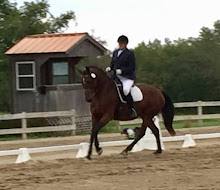There are some people that are just plain nice people. They want to find only positive ways to interact with their horses. This can work most of the time but not all of the time.
If you have a horse that bites, it is your responsibility to resolve that issue. Many times I think this issue starts when the horse is a foal. Foals can be really oral and some of them will lick the people handling them. At that point just pushing their noses away can be enough. If you do not address it at that point, it becomes biting and then eventually the horse sees it as a fun game. This horse has become a problem. If you watch the herd, many horses play biting games with each other and the looser backs up. So if you have a biting issue you need to back that horse up every time it tries to bite or exhibits pre-biting behavior like putting his lips close to your body. This has to be a consistent fix every time the horse is handled.
Then there is the issue of a horse that pretends to be afraid of the mounting block. When I say this I do not mean a young horse that has never seen one I mean an adult horse that has been up to one hundreds or times. The handler must drive horse towards the block and reward the horse for going up to the block. This can be done forward or backwards. This pretend fear is the horse checking in to see if you are really his or her leader.
Space issues are important, if your horse is afraid and shies into you instead of away from you it just plain is not safe. I know a woman that was leading her horse and he became frightened and shied into her. I do not know if he just knocked her down or knocked her down and ran her over. I never heard the details. What I did hear is that she had a fractured skull. What I am trying to say is that it does not matter why your horse is scared, he or she is not allowed in your space when they are frightened. This is a safety issue. The difference in weight and size makes it dangerous for that to be the case. Petting the horse when is frightened, is o.k. if the horse is respecting your space. But if the horse is shying into you or kicking at you, petting is not the best idea. Enforcing your space is number one and you can follow up with petting once the horse respects your space.
Further, expanding on space issues is the importance of the horse moving its shoulder away from the handler when asked. Horses rarely shy into a person all of a sudden. They usually are too close to the handler in their shoulder area for quite some time and then it becomes critical in a scary situation. I know ground work can be boring but it is really an important piece.
If you look at setting limits as helping the horse, I think it will help if you are a kind hearted person. The horse who can walk quietly and politely next to the human without crowding them or biting them will have an easier time interacting with people. If you help the horse become human friendly, the horse will have a better chance to have a stable productive life.
Subscribe to:
Post Comments (Atom)

No comments:
Post a Comment
Note: Only a member of this blog may post a comment.